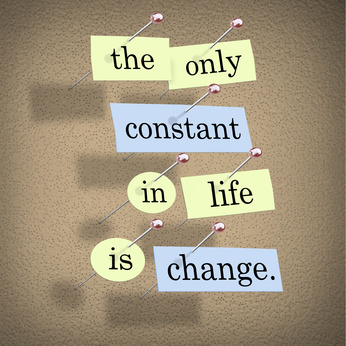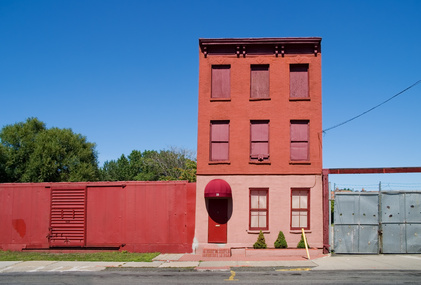Making a piece of property more valuable doesn’t always involve fresh paint, carpet, or landscaping. Sometimes there isn’t even a building involved!
In a world where change is the only constant, creative changes of use can be one of the most powerful, profitable ways to make a property more appealing to the next buyer or tenant.
In the studio to discuss how to use the change to force equity:
- The Jedi of jawboning, host Robert Helms
- His Padawan of pontification, co-host Russell Gray
 In the Star Wars films, Jedi Knights are able to use an invisible powerful force to manipulate the world around them. Not only that, but Jedis enjoyed extreme awareness…able to sense dangers and opportunities far too subtle for the five sense. Plus, they could react with lightning quick reflexes.
In the Star Wars films, Jedi Knights are able to use an invisible powerful force to manipulate the world around them. Not only that, but Jedis enjoyed extreme awareness…able to sense dangers and opportunities far too subtle for the five sense. Plus, they could react with lightning quick reflexes.
Wouldn’t it be cool to be able to use the Force in your real estate investing?
We think “using the Change” to force (i.e., increase) the value (equity and cash flow) is one of the most powerful concepts in real estate investing.
Nearly every newbie real estate investor dreams of finding the ugly duckling property and throwing a few coats of paint on the walls and lawn, then sticking a yard sign up and selling for a fast $50,000 profit.
The problem is that there’s a million people who can do that, so the competition is fierce and the margins are small. We’re not saying it can’t be done…because people do it all the time. There’s ALWAYS room for a smarter, faster player…even in a crowded field of competitors.
But if you can move up the food chain a little bit, the crowd thins out so your creativity and hustle has a better chance of producing superior profits.
The concept of changing use encompasses many different strategies and techniques. But generally, they fall into three broad categories:
- Development
- Redevelopment
- Conversion
In Development, the obvious change of use is going from an empty lot to a beautiful building that can house people or businesses.
Of course, ground up development takes a lot of money and expertise…all of which you can find if you know how to organize teams and raise money. That’s what we teach in our Secrets of Successful Syndication seminar, and why we STRONGLY recommend that EVERY real estate investor or entrepreneur take professional sales training. But that’s another rant.
Back to forcing equity by changing the use…
In Development, there are many incremental steps along the way from empty lot to beautiful building. You can enter at any point, move the ball forward some or all of the way, and then exit with a profit. And sometimes you don’t even have to touch the dirt.
The point is, you don’t have to do the project from soup to nuts. But you do need to know the sequence and what needs to change to make the property more appealing to the next guy.
For example, some folks are land developers. They buy a piece of land and prepare it to be built on. It may start with a zoning change…say from agriculture (farm) to industrial, commercial or residential. In our categories, we’d call this Conversion. So you can see that you might apply more than one type of change of use to a project.
If a buyer showed up and offered a profitable price, the Land Developer could exit here. Or he could keep going.
Maybe the next step is to get approvals for all kinds of infrastructure, like utilities, roads, etc. This doesn’t mean he need to actually build them…just getting the plans and permits can be very valuable to the next guy.
You get the idea. Every step along the way from dirt to occupied building, there are opportunities to add value and earn profit.
 Now in Redevelopment, it’s exactly the same, but different…because now you’re dealing with an existing structure. Usually, it’s one that’s in bad shape, poorly managed, or both. This is your basic fixer upper.
Now in Redevelopment, it’s exactly the same, but different…because now you’re dealing with an existing structure. Usually, it’s one that’s in bad shape, poorly managed, or both. This is your basic fixer upper.
But don’t just think of fixer uppers as little green houses. You can re-hab a hotel, a retail center, an office building, a shopping mall. etc.
And again, YOU don’t have to be the expert. You can hire experts. You simply need to see the potential…i.e., have a good idea (which you can also borrow from someone else), and then organize the team and resources to move the project forward incrementally.
The important point here is that there’s more to leverage than just money. You can leverage other people’s expertise too.
The third category is Conversion.
We already talked about one component of conversion, which is to change the zoning of a piece of land as part of going from dirt to building. But you can also convert the use of an existing building.
Probably the most common example of this is condo conversions. These were all the rage pre-Crash and as financing continues to loosen up, and affordable housing demand increases, it’s a safe bet that condos will become popular again.
A condo conversion is really a zoning change, in which an apartment building is converted (sub-divided) into a collection of individual units that can be sold separately.
 But you can also sub-divide a piece of land, or convert a residential property to commercial use or vice-versa. A warehouse can become loft apartments or individual condos. An apartment can become a motel or vice-versa.
But you can also sub-divide a piece of land, or convert a residential property to commercial use or vice-versa. A warehouse can become loft apartments or individual condos. An apartment can become a motel or vice-versa.
Do you see how much fun this can be?
So where Jedi Knights use the force to change things around them, we use the change to force the equity and earn profits by adding value!
Listen Now:
- Don’t miss an episode of The Real Estate Guys™ radio show! Subscribe to the free podcast!
- Stay connected with The Real Estate Guys™ on Facebook!
The Real Estate Guys™ radio show and podcast provides real estate investing news, education, training and resources that help real estate investors succeed.













